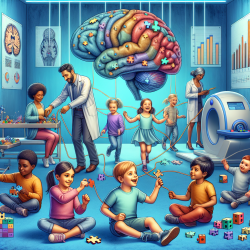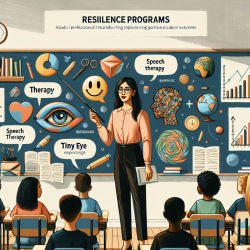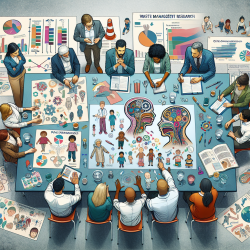Introduction to Cognitive Reserve and Its Implications for Child Therapy
In the realm of speech-language pathology, particularly when working with children, understanding the underlying cognitive mechanisms can significantly enhance therapeutic outcomes. A recent study titled "Identifying a task-invariant cognitive reserve network using task potency" offers valuable insights into the concept of cognitive reserve (CR) and its neural underpinnings. This study provides a framework that can be adapted to improve therapeutic strategies for children by leveraging the brain's inherent ability to adapt and compensate for cognitive challenges.
Understanding Cognitive Reserve
Cognitive reserve refers to the brain's resilience to neuropathological damage. It is a concept that explains why some individuals maintain cognitive function despite age-related or disease-related brain changes. The study identifies a "task-invariant" CR network, which is a functional network in the brain that remains active across various cognitive tasks. This network's potency, or its ability to maintain connectivity during tasks, correlates with IQ but not directly with education, suggesting a more innate aspect of cognitive resilience.
Application of Research Findings in Child Therapy
For practitioners in speech-language pathology, especially those working with children, the concept of a task-invariant CR network can be transformative. Here’s how:
- Customized Interventions: Understanding that certain brain networks are consistently active across tasks can help in designing interventions that target these networks, potentially enhancing cognitive resilience in children.
- Focus on IQ-related Activities: Since the study highlights a correlation between task potency and IQ, activities that challenge and develop a child’s problem-solving and reasoning skills could be beneficial.
- Monitoring Cognitive Development: Practitioners can use these insights to monitor changes in cognitive function, adjusting therapeutic approaches to align with the child’s developmental trajectory.
Encouraging Further Research
While the study provides a robust framework, it also opens avenues for further research. Practitioners are encouraged to explore how these findings can be integrated into everyday therapeutic practices and to contribute to ongoing research in this area. By collaborating with neuroscientists and engaging in interdisciplinary research, speech-language pathologists can help refine and expand the application of CR concepts in therapy.
Conclusion
The identification of a task-invariant cognitive reserve network offers a promising avenue for enhancing therapeutic outcomes in children. By focusing on data-driven approaches and understanding the brain's inherent capabilities, practitioners can develop more effective, personalized interventions. This research not only enhances our understanding of cognitive resilience but also provides practical applications that can make a significant difference in the lives of children.
To read the original research paper, please follow this link: Identifying a task-invariant cognitive reserve network using task potency.










